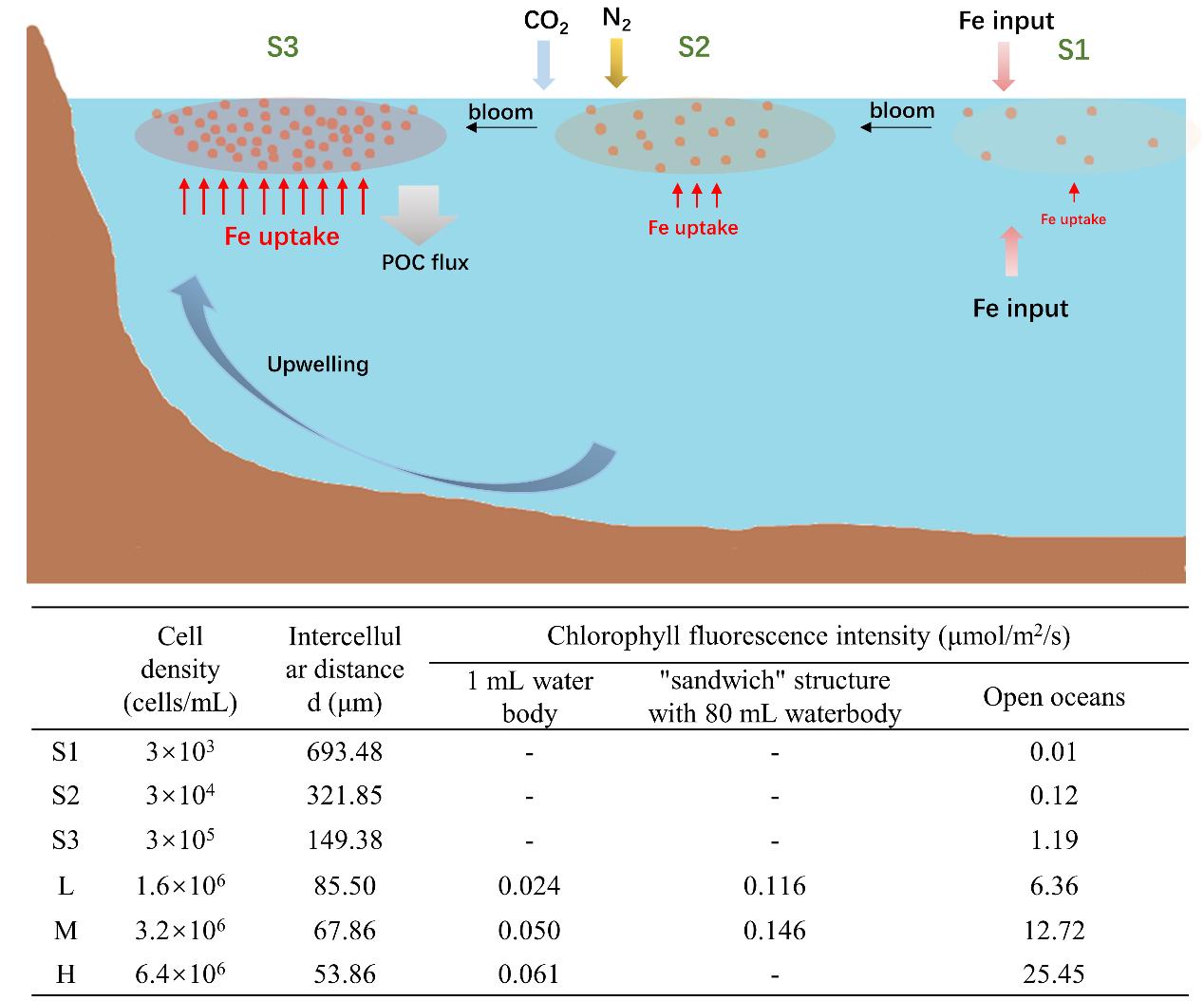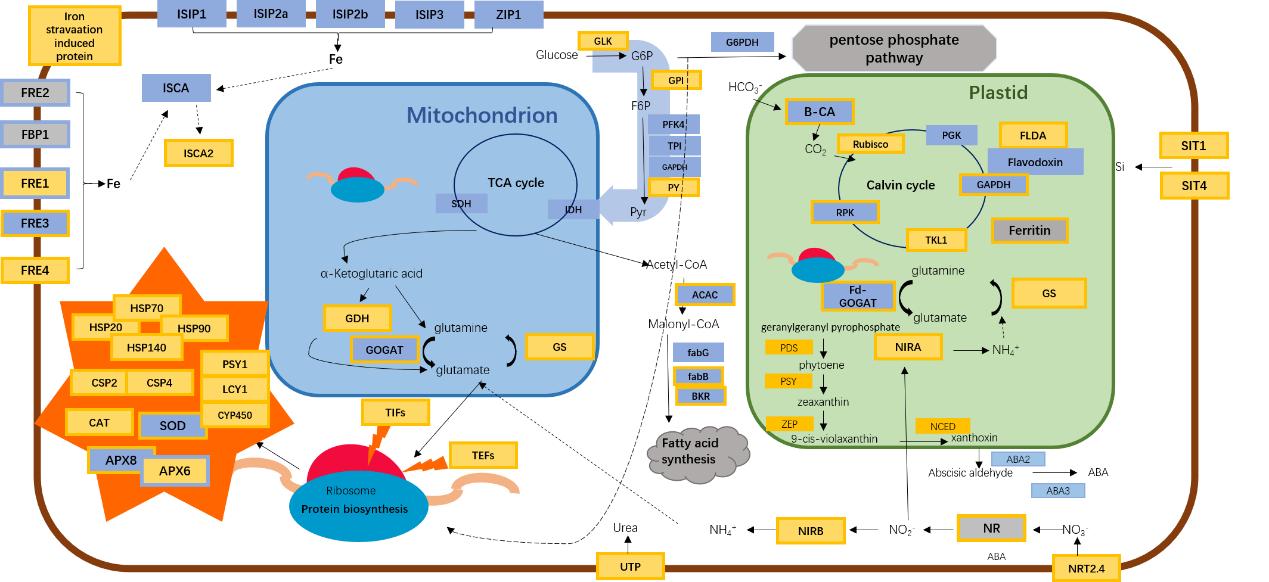Iron concentration limits the growth of phytoplankton in extensive high nutrient low chlorophyll (HNLC) regions of the ocean, even though it is very abundant on land. Accordingly, a proposal was raised to mitigate increasing atmospheric CO2 and "cool down" the Earth, by performing mesoscale Fe enrichment experiments in the open ocean.
In a number of large-scale in-situ Fe enrichment experiments conducted in well-characterized HNLC regions, diatom-dominated phytoplankton blooms were observed, and these were accompanied by a considerable CO2 drawdown in the ocean surface layer and substantial carbon export to sediments.
Although the iron uptake rate of diatoms largely determines the magnitude and longevity of diatom blooms, the underlying mechanisms regulating iron uptake remain unclear.
The research team led by WANG Guangce at the Institute of Oceanology, Chinese Academy of Sciences (IOCAS), aimed to elucidate the relationship between iron uptake pattern and cell density in Phaeodactylum tricornutum, which is a representative marine diatom with solid background for iron uptake research.
Their findings were published in BMC Biology and Algal Research.
Researchers found that cells could upregulate the iron uptake protein to facilitate iron assimilation under high cell density, and the chlorophyll fluorescence derived from neighboring cells acts as the signaling factor in this process. This study provides novel insights into biotic signal sensing in phytoplankton, which can help to elucidate the underlying mechanisms of marine diatom blooms.
Besides, the carbon export mediated by marine diatoms were mainly due to particulate organic carbon (POC) composed by algal aggregation, zooplankton fecal pellets, frustules, resting cells/spores and so on. Most of the POC was quickly respired back to CO2 during its descent through the water, whereas highly silicified and fast sinking diatom resting cells/spores were able to bypass the intense grazing pressure in the mixed layer to achieve long-term carbon sequestration.
Researchers constructed the ferritin overexpression and silence strains in Phaeodactylum tricornutum to explore the significant role of ferritin in the morphologic transformation. Results showed that the formation of oval cells is accompanied with enrichment of ferritin in Phaeodactylum tricornutum. The ferritin overexpression in marine diatom has a close relationship with morphological transformation from fusiform to ovoid morphotype, after which they enter a resting stage, which is accompanied by abscisic acid accumulation.
This study improves understanding of the molecular processes in diatom resting cells/spores' formation and suggests that ferritin accumulation might improve the sequestration of photosynthetically fixed atmospheric CO2 into the deep sea.
The above studies were supported by the National Key R&D Program of China, Key Deployment Project of Centre for Ocean Mega-Research of Science, Chinese Academy of Sciences, Shandong Provincial R&D Program, Chinese Academy of Sciences, and The National Natural Science Foundation of China, etc.

Fig. 1 Schematic illustration of the bloom process in natural oceans and calculated chlorophyll fluorescence intensity

Fig. 2 Cell schematic displaying the log2 fold change in gene expression and protein abundance between FTN-OE oval cells and WT fusiform cells
X. Liu, L. Wang, S. Wu, L. Zhou, S. Gao, X. Xie, L. Wang, W. Gu, G. Wang. (2022). Formation of resting cells is accompanied with enrichment of ferritin in marine diatom Phaeodactylum tricornutum. Algal Research, 61, 102567.
X. Liu, X. Xie, S. Gao, L. Wang, L. Zhou, Y. Liu, Q. Hu, W. Gu, G. Wang. (2021). Chlorophyll fluorescence as a light signal enhances iron uptake by the marine diatom Phaeodactylum tricornutum under high-cell density conditions. BMC Biol., 19, 249.
LIU Xuehua
Institute of Oceanology
E-mail: liuxuehua@qdio.ac.cn
(Editor: ZHANG Yiyi)
|
|

Address: 7 Nanhai Road, Qingdao, Shandong 266071, China
Tel: 86-532-82898902 Fax: 86-532-82898612 E-mail: iocas@qdio.ac.cn


